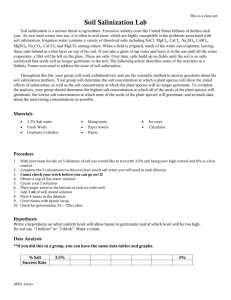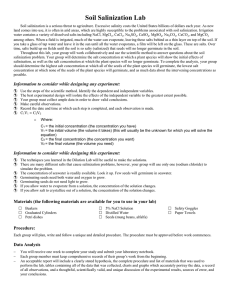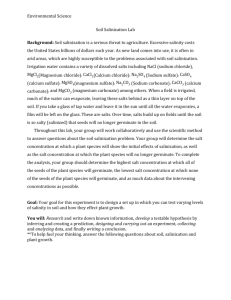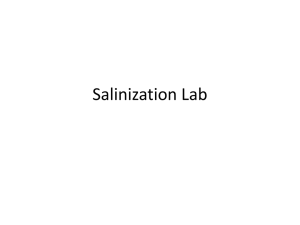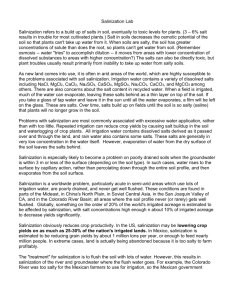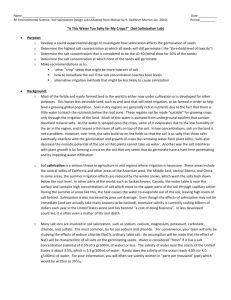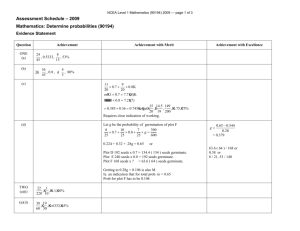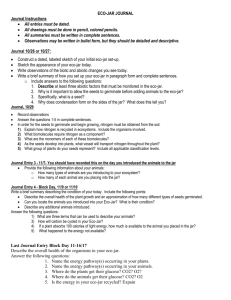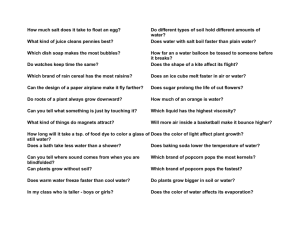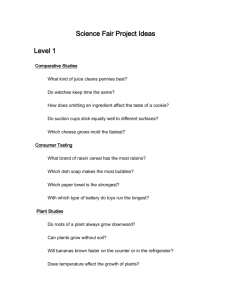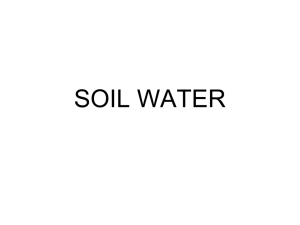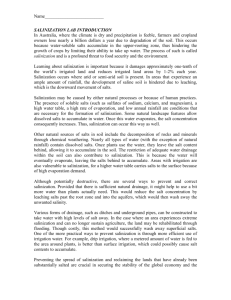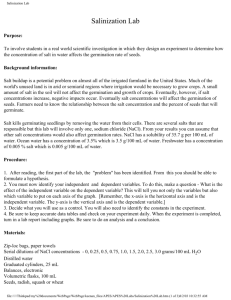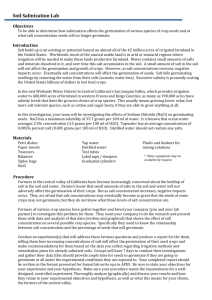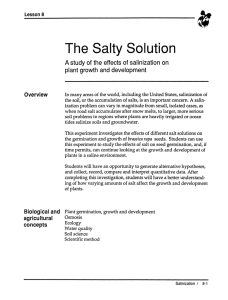Salinization Lab - yayscienceclass.com
advertisement
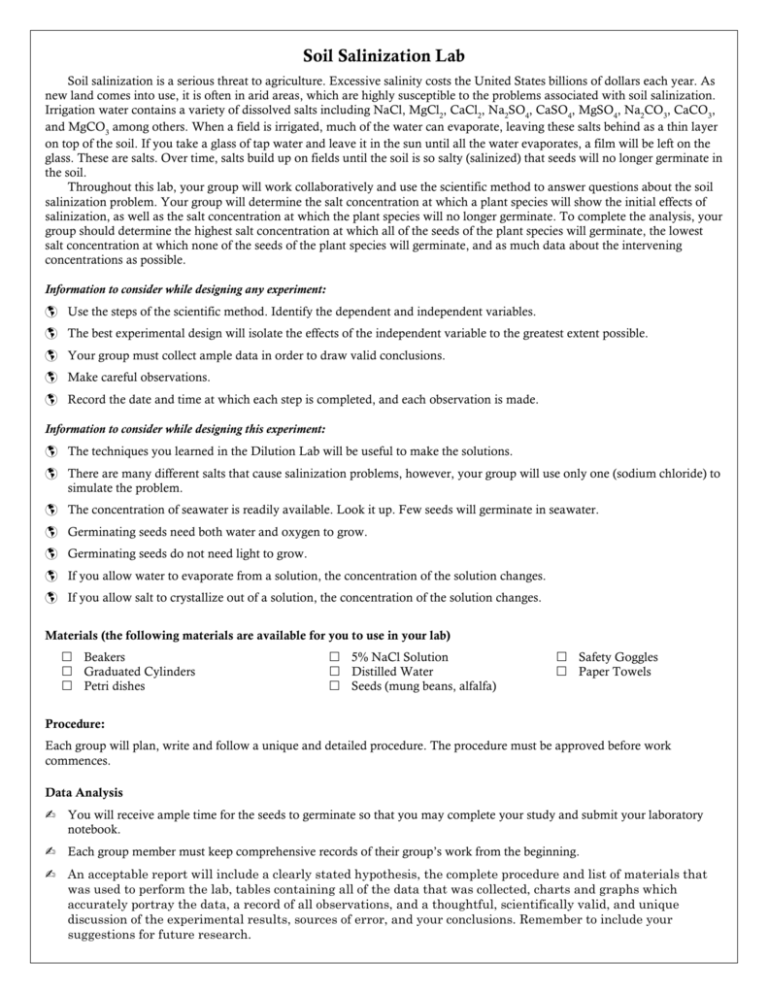
Soil Salinization Lab Soil salinization is a serious threat to agriculture. Excessive salinity costs the United States billions of dollars each year. As new land comes into use, it is often in arid areas, which are highly susceptible to the problems associated with soil salinization. Irrigation water contains a variety of dissolved salts including NaCl, MgCl2, CaCl2, Na2SO4, CaSO4, MgSO4, Na2CO3, CaCO3, and MgCO3 among others. When a field is irrigated, much of the water can evaporate, leaving these salts behind as a thin layer on top of the soil. If you take a glass of tap water and leave it in the sun until all the water evaporates, a film will be left on the glass. These are salts. Over time, salts build up on fields until the soil is so salty (salinized) that seeds will no longer germinate in the soil. Throughout this lab, your group will work collaboratively and use the scientific method to answer questions about the soil salinization problem. Your group will determine the salt concentration at which a plant species will show the initial effects of salinization, as well as the salt concentration at which the plant species will no longer germinate. To complete the analysis, your group should determine the highest salt concentration at which all of the seeds of the plant species will germinate, the lowest salt concentration at which none of the seeds of the plant species will germinate, and as much data about the intervening concentrations as possible. Information to consider while designing any experiment: Use the steps of the scientific method. Identify the dependent and independent variables. The best experimental design will isolate the effects of the independent variable to the greatest extent possible. Your group must collect ample data in order to draw valid conclusions. Make careful observations. Record the date and time at which each step is completed, and each observation is made. Information to consider while designing this experiment: The techniques you learned in the Dilution Lab will be useful to make the solutions. There are many different salts that cause salinization problems, however, your group will use only one (sodium chloride) to simulate the problem. The concentration of seawater is readily available. Look it up. Few seeds will germinate in seawater. Germinating seeds need both water and oxygen to grow. Germinating seeds do not need light to grow. If you allow water to evaporate from a solution, the concentration of the solution changes. If you allow salt to crystallize out of a solution, the concentration of the solution changes. Materials (the following materials are available for you to use in your lab) Beakers Graduated Cylinders Petri dishes 5% NaCl Solution Distilled Water Seeds (mung beans, alfalfa) Safety Goggles Paper Towels Procedure: Each group will plan, write and follow a unique and detailed procedure. The procedure must be approved before work commences. Data Analysis ✍ You will receive ample time for the seeds to germinate so that you may complete your study and submit your laboratory notebook. ✍ Each group member must keep comprehensive records of their group’s work from the beginning. ✍ An acceptable report will include a clearly stated hypothesis, the complete procedure and list of materials that was used to perform the lab, tables containing all of the data that was collected, charts and graphs which accurately portray the data, a record of all observations, and a thoughtful, scientifically valid, and unique discussion of the experimental results, sources of error, and your conclusions. Remember to include your suggestions for future research.
